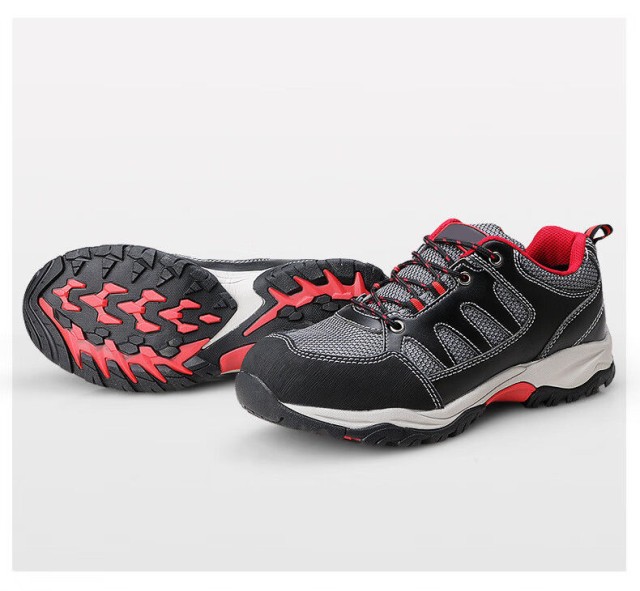Workplace safety begins from the ground up—literally. For industries ranging from construction to electrical work, safety shoes aren’t just accessories; they’re critical protective gear. But how do manufacturers ensure these shoes meet the stringent demands of global standards? This article breaks down the science, certifications, and testing processes behind safety footwear, offering clarity for bulk buyers, distributors, and safety managers.
Safety Standards in Footwear Development
Safety shoes are engineered to protect against hazards like impacts, punctures, and electrical shocks. But their effectiveness hinges on adherence to internationally recognized standards. Two key frameworks dominate:
- ASTM F2413 (U.S. Standard): Governs toe protection (impact resistance up to 75 lbf), compression, and electrical insulation. Shoes meeting impact resistance are labeled with an "I."
- EN ISO 20345 (Global Benchmark): Requires 200-joule toe protection, slip-resistant soles, and water resistance. Categories like S1 (anti-static) to S5 (highest protection) address diverse risks.
These standards aren’t arbitrary. They’re shaped by real-world accident data and expert consensus, ensuring designs mitigate common workplace injuries.
Key Safety Certifications and Their Impact on Design
Certifications dictate every design choice:
-
Toe Protection:
- Steel toes: Ideal for heavy industries (e.g., manufacturing) but conduct temperature extremes.
- Composite toes (Kevlar/carbon fiber): Lighter, non-conductive, and suited for electricians or cold environments.
-
Material Selection:
- Leather remains a top choice for its durability, breathability (absorbing 3x its weight in moisture), and natural insulation.
-
Specialized Features:
- Anti-slip soles (tested on greased surfaces) and puncture-resistant midsoles (EN ISO 20345’s "P" rating) address sector-specific risks.
Material Innovations for Enhanced Protection
Modern safety shoes leverage advanced materials to balance protection and comfort:
- Hydrocarbon-Resistant Outsoles (Fo rating): Vital for oil rigs or chemical plants.
- Waterproof Membranes (Wr/Wru ratings): Keep feet dry in wet conditions without sacrificing breathability.
- Energy-Absorbing Heels (E rating): Reduce fatigue for workers standing for long hours.
These innovations reflect a shift from "one-size-fits-all" to tailored solutions for niche industries.
From Lab to Workplace: Stages of Product Testing
Certification is just the endpoint. Safety shoes undergo relentless testing to simulate decades of workplace abuse.
Simulating Real-World Hazards in Testing
- Impact Tests: A 75-lbf weight is dropped on the toe cap to mimic falling objects.
- Puncture Tests: A nail is driven into the sole at high pressure to assess penetration resistance.
- Slip Tests: Outsoles are evaluated on greased and inclined surfaces (per ISO 13287).
These tests ensure shoes perform under worst-case scenarios, not just ideal conditions.
Case Study: A Safety Shoe’s Journey Through Compliance
Consider a boot designed for construction:
- Prototype Phase: Composite toe caps are tested for impact resistance (ASTM F2413).
- Material Validation: Leather uppers undergo water immersion and abrasion trials.
- Field Testing: Workers log miles on uneven terrain to assess long-term comfort and durability.
Only after passing all stages does the shoe earn its certification markings ("I," "P," etc.).
The Role of Industry Experts in Shaping Safety Solutions
Ergonomists and safety professionals collaborate to address unseen needs:
- Fit Adjustments: Wider toe boxes reduce pressure points for workers with wider feet.
- Weight Optimization: Lighter materials (e.g., fiberglass) cut fatigue without compromising protection.
- User Training: Experts emphasize proper maintenance (e.g., drying wet liners) to extend shoe lifespans.
This human-centered approach bridges the gap between lab specs and real-world usability.
Why This Matters for Bulk Buyers
For distributors and brand owners, understanding these processes ensures you stock footwear that truly safeguards end-users. Compliance isn’t just about checking boxes—it’s about investing in products that reduce workplace injuries and liability risks.
Ready to elevate your safety footwear lineup? Partner with 3515, a trusted manufacturer with decades of expertise in crafting certified, innovation-driven safety shoes for global industries. From ASTM to EN ISO-compliant designs, we deliver bulk solutions that meet the highest standards—because safety should never be compromised.
Related Products
- Custom Safety Shoe Manufacturer for Wholesale & OEM Brands
- Wholesale Durable Breathable Safety Boots Custom OEM Manufacturer
- Durable Rubber-Soled Utility Shoes for Wholesale & Custom Brand Manufacturing
- Wholesale Leather Safety Boots with Customizable Protective Toe
- Durable Canvas Work Shoes with Rubber Lug Sole | Wholesale Manufacturer
Related Articles
- How Goodyear Welt Construction Delivers Decades of Wear: An Engineering Perspective
- Why Goodyear Welt Construction Delivers Unmatched Durability and Value
- How to Master Business Casual Attire for Any Workplace Environment
- How the Goodyear Welt Machine Made Durable Footwear Accessible to All
- How Safety Trainer Materials Adapt to Workplace Hazards and Comfort Needs




















